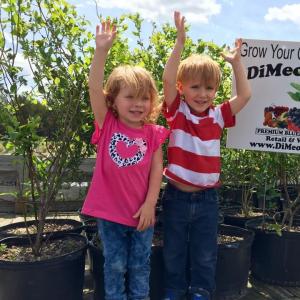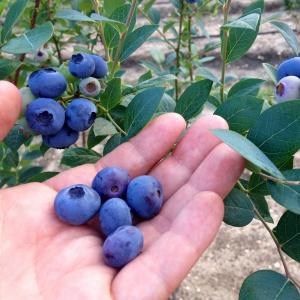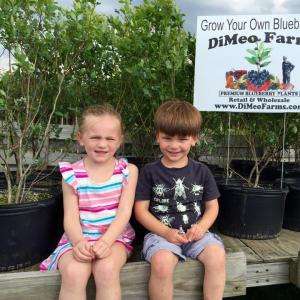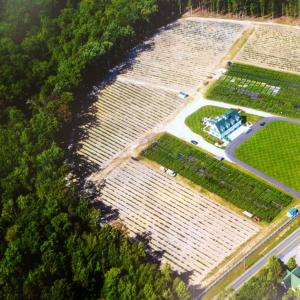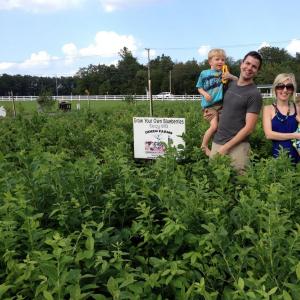Join WWOOF Australia :)
http://www.wwoof.com.au/shop/shop-online
Check out our latest newsletter!
http://www.wwoof.com.au/images/newsletters/nl_93.pdf
Check out our last Newsletter for 2016 :)
http://www.wwoof.com.au/images/newsletters/nl_92.pdf
Have you signed up for the WWOOF Newsletter yet?http://wwoof.com.au/wwoofers/newsletter-signup
Check out our last newsletter, you can have this delivered straight to your email inbox for free! Sign up now &never miss an issue!
http://www.wwoof.com.au/images/newsletters/nl_92.pdf
Want to join our community? Enrollment for the 2017 season has begun! Signup before March 1st for early bird pricing.
And we are also offering a chance to win a a free farm share to those helping with our gofundme campaign! For every $50 you donate to our fund, you will be entered to win a free full share for the 2017 season. A winner will be picked by March 1st and I email you if you have won!
Donate here: https://www.gofundme.com/oneacrefarm
2016 will be known to Maryland beekeepers as another year of extremely heavy losses.
2016 has been extremely challenging for our managed honeybee colonies here in Maryland. According to BIP (Bee Informed Partnership) 2016 is the year that losses exceeded 56%, and over a 3 year average, Maryland beekeepers have lost 54% of their total colonies. Maryland has approximately 14,000+ registered honeybee colonies according to Maryland State Ag statistics. The average replacement costs per colony is $150, replacement colonies range from $100/package to $200/nuc. This means that beekeepers in Maryland spend over $1.13MILLION every year to replace approximately 7,600 lost registered honeybee colonies. This does not include lost revenue, lost labor, or losses in potential business growth that would otherwise be possible by splitting healthy colonies. There are multiple, complex reasons for these losses, among them include, but are not limited to the following situations. Forage is the basis of a healthy colony’s immune system. Yet, most areas of the state saw very low levels of abundant natural forage and rainfall this year adversely affecting the colonies’ immunity. Thus, colonies with compromised immune systems succumb to the ravages of mites, viruses, and bacterial infections. To add to this, many beekeepers have seen an increase in pesticide use in the form of lawn and yard spraying, compounded by municipal and private responses to Zika Virus in the form of broad spectrum mosquito spraying. Moreover, summer queen failures have become a chronic problem in Maryland, even including queen failures that occur within the first summer after a colony is established, which, historically, would be considered a rarity. Furthermore, the translocation of honeybee colonies is highly problematic as colonies are unable to easily or fully integrate into the environment into which they have been transported.
If managed honeybee losses are this high, how do we think that wild native bee populations are fairing? Managed populations are the only populations to which beekeepers have regular access. If managed honeybees are facing the difficulties mentioned above, then it is reasonable to assume that wild native bee populations are suffering in the same ways.
Dr. David Goulson, Elizabeth Nicholls, Cristina Botías, and Ellen L. Rotheray published their research findings in their article, Bee declines Driven by Combined Stress from Parasites, Pesticides, and Lack of Flowers, suggesting several possible ways to mitigate managed honeybee colony losses:
"Bees are subject to numerous pressures in the modern world. The abundance and diversity of flowers has declined; bees are chronically exposed to cocktails of agrochemicals, and they are simultaneously exposed to novel parasites accidentally spread by humans.
Climate change is likely to exacerbate these problems in the future. Stressors do not act in isolation; for example, pesticide exposure can impair both detoxification mechanisms and immune responses, rendering bees more susceptible to parasites. It seems certain that
chronic exposure to multiple interacting stressors is driving honey bee colony losses and declines of wild pollinators, but such interactions are not addressed by current regulatory procedures, and studying these interactions experimentally poses a major challenge. In the meantime, taking steps to reduce stress on bees would seem prudent; incorporating flower-rich habitat into farmland, reducing pesticide use through adopting more sustainable farming methods, and enforcing effective quarantine measures on bee movements are all practical measures that should be adopted. Effective monitoring of wild pollinator populations is urgently needed to inform management strategies into the future.”
Beekeepers here in Maryland have very tough decisions to make. Our current track record for managed honeybee losses is abysmal, in fact the entire Mid-Atlantic region is suffering from catastrophic honeybee losses in managed colonies. Do we make much needed corrections to our management of our colonies or pursue the “same ol' same ol'” and continue to pay for replacement colonies, which in many cases only exacerbates the situation?
We can make things better for pollinators and give them the best possible chance for survival, but in order to do that, we must all act together to see those changes come to fruition.
Bill Castro
Beefriendlyapiary.com
2016 will be known to Maryland beekeepers as another year of extremely heavy losses.
2016 has been extremely challenging for our managed honeybee colonies here in Maryland. According to BIP (Bee Informed Partnership) 2016 is the year that losses exceeded 56%, and over a 3 year average, Maryland beekeepers have lost 54% of their total colonies. Maryland has approximately 14,000+ registered honeybee colonies according to Maryland State Ag statistics. The average replacement costs per colony is $150, replacement colonies range from $100/package to $200/nuc. This means that beekeepers in Maryland spend over $1.13MILLION every year to replace approximately 7,600 lost registered honeybee colonies. This does not include lost revenue, lost labor, or losses in potential business growth that would otherwise be possible by splitting healthy colonies. There are multiple, complex reasons for these losses, among them include, but are not limited to the following situations. Forage is the basis of a healthy colony’s immune system. Yet, most areas of the state saw very low levels of abundant natural forage and rainfall this year adversely affecting the colonies’ immunity. Thus, colonies with compromised immune systems succumb to the ravages of mites, viruses, and bacterial infections. To add to this, many beekeepers have seen an increase in pesticide use in the form of lawn and yard spraying, compounded by municipal and private responses to Zika Virus in the form of broad spectrum mosquito spraying. Moreover, summer queen failures have become a chronic problem in Maryland, even including queen failures that occur within the first summer after a colony is established, which, historically, would be considered a rarity. Furthermore, the translocation of honeybee colonies is highly problematic as colonies are unable to easily or fully integrate into the environment into which they have been transported.
If managed honeybee losses are this high, how do we think that wild native bee populations are fairing? Managed populations are the only populations to which beekeepers have regular access. If managed honeybees are facing the difficulties mentioned above, then it is reasonable to assume that wild native bee populations are suffering in the same ways.
Dr. David Goulson, Elizabeth Nicholls, Cristina Botías, and Ellen L. Rotheray published their research findings in their article, Bee declines Driven by Combined Stress from Parasites, Pesticides, and Lack of Flowers, suggesting several possible ways to mitigate managed honeybee colony losses:
"Bees are subject to numerous pressures in the modern world. The abundance and diversity of flowers has declined; bees are chronically exposed to cocktails of agrochemicals, and they are simultaneously exposed to novel parasites accidentally spread by humans.
Climate change is likely to exacerbate these problems in the future. Stressors do not act in isolation; for example, pesticide exposure can impair both detoxification mechanisms and immune responses, rendering bees more susceptible to parasites. It seems certain that
chronic exposure to multiple interacting stressors is driving honey bee colony losses and declines of wild pollinators, but such interactions are not addressed by current regulatory procedures, and studying these interactions experimentally poses a major challenge. In the meantime, taking steps to reduce stress on bees would seem prudent; incorporating flower-rich habitat into farmland, reducing pesticide use through adopting more sustainable farming methods, and enforcing effective quarantine measures on bee movements are all practical measures that should be adopted. Effective monitoring of wild pollinator populations is urgently needed to inform management strategies into the future.”
Beekeepers here in Maryland have very tough decisions to make. Our current track record for managed honeybee losses is abysmal, in fact the entire Mid-Atlantic region is suffering from catastrophic honeybee losses in managed colonies. Do we make much needed corrections to our management of our colonies or pursue the “same ol' same ol'” and continue to pay for replacement colonies, which in many cases only exacerbates the situation?
We can make things better for pollinators and give them the best possible chance for survival, but in order to do that, we must all act together to see those changes come to fruition.
Bill Castro
Beefriendlyapiary.com
Buy the best organic blueberry plants at the lowest prices online and large organic blueberry bushes. We have all sizes or organic blueberries plants at DiMeo Farms that are on sale now. CALL (609) 561-5905 to get a fast shipping quote, or schedule a pick-up appointment. Start saving money now and grow your own organic blueberries for free at home in your own backyard blueberry garden. Buy the best tasting and best producing blueberry plant varieties that include our ORGANIC, Non-GMO, Heirloom blueberry plant types. DiMeo Farms carries forward well over 100 years of blueberry growing history in the DiMeo family. One of our blueberry farm experts can give you free blueberry planting advice and expert tips on how to grow the big organic blueberry bushes as part of your sustainable edible landscaping so you can grow your own blueberries at home, not just to save money but for your good health and food security. www.DiMeoFarms.com/blueberry-plants
Dear Friends of One Acre Farm,
As many of you know, we leased our current land 7 years ago from a healthcare organization. It was always understood that this was not a forever lease, and one day we would have to begin the process of moving the farm again.
That day has come.
We have been told that since the completion of the Clarksburg Outlets the land that we have been farming organically to support our CSA has attracted significant interest including offers to purchase. We’ve also been told that upon acceptance of an offer, it is likely to take up to two years to close on the loan (for permitting/surveying/etc.). To our knowledge, an offer has not yet been accepted. However, realistically, this also means that our best case scenario is no more than 2 years on the current land and, as a result, we only have that amount of time (+/- 2 years) to find a permanent home for our farm.
I have spent the last 10 years talking with realtors, looking at property and running the numbers on how to afford land in the county that I was born and raised. Land suitable for farming, within a distance that works for my family is not cheap.
I am at a crossroads, and I am weighing all my options. Over the last few months I have met with folks in all areas of the farming world, investors, non-profits, government employees, corporations and farmers to try to devise a plan to keep me farming.
The takeaway so far for me is a slight shift in my business model, which I will unveil at a later date, and have begun a fundraising campaign to help secure the necessary funds to acquire land.
Go to https://www.gofundme.com/oneacrefarm to learn about our fundraising goal
This is a significant undertaking that I am willing to commit to. That being said, I am also realistic. I am confident in the terms I am willing to accept to make this work, and pragmatic enough to know when I’m straying too far from my vision to be willing to say this isn’t for me anymore.
Over the next few months, those that are interested in the planning stages of the farm’s next chapter are encouraged to reach out. I plan on holding a discussion with all interested parties to go over details, ideas, and challenges to try to reach a conclusion that includes land acquisition, a CSA, and a farm to food bank program that expands on our current “Buy-a-Field” campaign.
My vision for this farm has always to be something bigger than just growing vegetables. It has always been about creating a community. I encourage anyone interested to join us.
'Chestnuts roasting on an open fire…', we are familiar with that classic Christmas tune, but just where do chestnuts come from and can I grow them? Sure, anyone with the land space can grow chestnuts. Just plant two or more chestnut trees for cross pollination, then be patient. In a few years you can harvest ripe chestnuts in your own yard minutes before you're ready to roast them over an open fire.
Choose the Tree
There are four main types of chestnut trees grown in United States: The American chestnut (Castanea dentata), the Chinese chestnut (C. mollissima), the Japanese chestnut (C. crenata) and the European chestnut (C. sativa).
Each specie will produce edible chestnuts, but each one will have a distinctive flavor and the trees will have varying growth habits. The American chestnut tree grows strong and tall, producing small, sweet nuts with easy-to-remove hulls. The Chinese chestnut tree grows wider than it does tall and produces smooth, sweet-flavored nuts. Japanese chestnut trees are semi-blight resistant and produce bitter-tasting nuts and the European chestnut tree grows large and strong, producing nuts with varying flavors.
Plant Two Trees
Once you have selected the tree variety, select a sunny location and prepare the soil for planting two trees. Two chestnut trees are needed for cross pollination, so unless your close neighbor (within 200 feet) has a chestnut tree, you will need to plant two.
Location
The ideal planting location for chestnut trees is on a sunny slope. This location will provide the tree with the needed sunlight (at least 6 hours a day) plus provide the means for quick rain water runoff so the tree roots do not become water logged. Never plant a chestnut tree at the bottom of a slope or in soggy marshland, the tree will not tolerate having its roots in soggy soil.
Plant Tree
Spring is the best time to plant a chestnut tree. Allow 40 feet in all directions for each tree, then dig a large planting hole that is twice as wide and twice as deep as the root ball. Mix compost or well-rotted cow manure into the removed soil and back-fill planting hole so the tree will planted at the same depth as it was in the container. Finish filling the hole with soil, tap down gently to ensure all roots are in contact with the soil, then water well.
Start from Seed
You can start a chestnut tree from a seed, which is just an untreated, raw chestnut. Place the raw chestnut(s) in a plastic bag that is filled damp sphagnum moss or sawdust. Seal the bag and place it in the refrigerate for 4-6 months. This chilling process is needed to cause the raw chestnut to go through the germination process. Chilling the chestnut for months inside a refrigerator mimics what the seed nut would go through if left alone outdoors, but the refrigeration chilling protects the seed nut from small animals and weather conditions which would destroy it.
Plant Seeds in Spring
As soon as the outdoor soil is thawed and workable (usually in March), remove the seed nut from its refrigerated resting place and plant into prepared soil. Dig a shallow, one-inch deep hole and place seed nut with sprout side facing downward. Cover lightly with loose soil and water once a week for the first two months.
Cover the planting location with some type of wire or wire basket so small animals, like squirrels, will not dig up the seed nut. Remove the wire protection after the seed nut has sprouted and the sampling tree reaches 12 inches in height.
Branch Training
Chestnut trees require very little care after planting, but to grow the most aesthetically pleasing, nut-producing tree, a little early branch training will be needed. Ensure adequate branch spacing by pinching or pruning off sucker branches that compete with the central trunk for height. Select a scaffold of limbs branching off from the main trunk, spacing them about one foot apart all around the trunk, then remove all the remaining branches during the first year after the tree is planted. Prune away diseased, dead or unsightly limbs as needed during the lifetime of the tree to keep it strong, healthy and looking good.
Harvest Time
Chestnuts are grown inside spiny burrs that can house 1-3 nuts. When the chestnuts are ripe in the early fall, the spiny burrs crack open and drop the ripe nuts to the ground or the entire spiny burr falls from the tree to the ground. In either event, the ripe chestnuts will be harvested off the ground under the tree, taking all the guess-work out of whether or not they are ripe.
Small animals will be competing with you for the ripe chestnuts when harvest time comes, so gather them as soon as possible after they fall from the tree.
